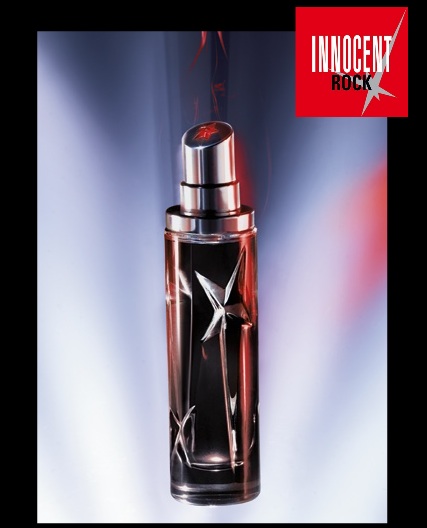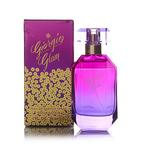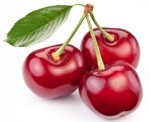Thierry Mugler Innocent Rock (2008) {Perfume Review} {New Fragrance}

Innocent Rock by Thierry Mugler is the latest version of Angel Innocent. It was released in February-March of 2008 as a limited-edition in collaboration with Le Club des Créateurs de Beauté. It is currently, several months later still, their top-selling fragrance.
The ad copy is meant to whip young women into action: "Indecently sexy, the innocent rock woman is mysterious, both provocative and sensual, she injects glamor into rock and seduces in the heart of innocence."
Interestingly, and as becomes apparent once you decrypt the scent, the grape note that is showcased in this perfume, which caught my interest initially, appears to be a by-product of the innovative research that Thierry Mugler conducted for the luxurious La Part des Anges, only, at one level, to make the concept of aged liqueur be more accessible to the wider and younger public.
Official notes are: grape, lychee, red rose, pepper...
The initial sensation is thick, grape-y, dark and juicy, redolent of lychee and mandarin, with the trademark Angel patchouli accord in the background. But the scent appears also to present a lift and offer a sort of contained bubbliness and edginess, due to a hefty dose of aldehydes.
The slightly raw aldehydes feel almost old-school when you close your eyes and forget about the rock and Angel concepts. In fact it makes you think more than anything else about vintage Chanel No.5, which was rock-n'-roll before the letter, back in 1921. It was also for the longest time the # 1 seller in France only to be dethroned by Angel. Is this a case of getting the best of both worlds, one might ask?
I cannot help but think at this point about a criticism commonly lodged against French culture and that is that it lacks an effervescent youth culture in the sense of the one that existed or still exists in London. The rock-n'-roll clubs mushroomed there, not in Paris. The punk movement was vibrant there too, only copied by isolated bands of youngsters in Paris. More recently a British shoe designer made an interesting remark about fashion orientations in Paris and New York City versus London explaining that in the French capital and in NYC, young women want to dress luxuriously, that is like their mothers, while in London, women want and have always wanted to dress like their daughters. I haven't smelled Vivienne Westwood Let It Rock yet and am wondering if the rock signature in it is more authentic or feels more like a hackneyed by-word too?
Revolt, anger, counter-culture are put in words with a sense of glam humor, but not in the juice itself. It is telling to me also that instead of composing a perfume called, say, Innocent Rap, that they went for an older music label cleansed by a long tradition of aesthetization, one also that is less referential of current social discontent expressed in the French 9-3.
As the scent develops it becomes discreetly orchard-like, peachy, tilting the perfume more in the direction of a fruity-floral with a medium-depth amber-y body. The rose emerges edged by the dirtiness of patchouli which makes it smell a bit like dried rose petals; at the same time, it is also like rose jam. The aldehydic signature now melds to give more of a nuance of warm, freshly laundered sheets with a metallic tang. These dry-cleaning-smell and hot-iron impressions, which go in the direction of the ones experienced with John Galliano, are further accentuated by clean white musks rather than dirty ones. But this initial impression is counterbalanced by darker notes of spicy, peppery rose, with hints of dirty animalic cumin and powdery cedar later on.
Although Innocent Rock presents a pleasant fruitiness and even makes use of an uncommon dark-grape note, grape liqueur we are told in fact, visibly inspired by the much more exclusive La Part des Anges, which was an expensive pean sung to the joys and traditions of wine-growing, it, all too soon, alas, loses its bite. At one level and notwithstanding the rather enjoyable grapiness, it soon becomes apparent to my nose that Innocent Rock ends up smelling like a permutative twist on the blackberry-and-musk concept of Mûre et Musc by L'Artisan Parfumeur. Exit the blackberry, enters the grape. And voilà! At the same time, a delightful peppery, saffron-y and powdery cedar-y rose peeks through in the longer dry-down, which makes it all seem worthwhile. You can wait for this delectable moment or decide to mix Poivre Piquant and Safran Troublant by L'Artisan Parfumeur, again.
If musical contestation has to rebel against something called tradition, then it makes sense to incorporate a classic reference like Chanel No.5 and then turn it upside-down, shake it, or even do something like shouting or sticking your tongue at it. But here the edgy aldehydes never seem to go beyond the level of contestation that Chanel No. 5 expressed. Innocent Rock seems foremost, tradition-bound and although not unpleasant to wear ends up, at its worst, coming across as a variation on the simple white musk ideal. Perhaps this passage from darkness to a kind of easy luminosity barely more exciting than the glare of a white light bulb does not play in favor of the dramatic momentum. The eau de toilette concentration also thins down the dark concept and promises of the perfume.
The second and third best-selling perfumes on Le Club des Créateurs happen to be the edt and edp versions of White Musk by The Body Shop, offered unexpectedly as part of their very select offerings. It must mean that someone knows that white musk sells, even in civet-redolent France (see The White-Musk Trend in Paris; Top White-Musk Trails)









